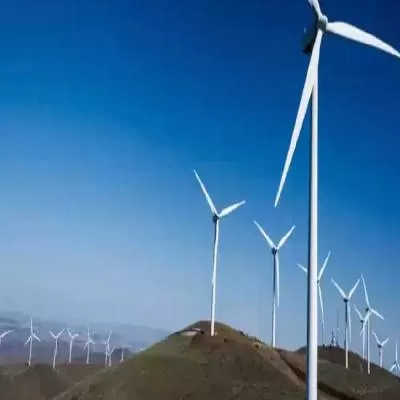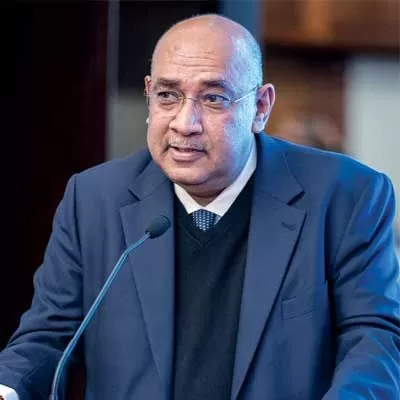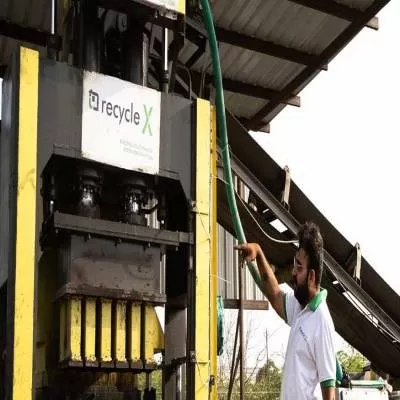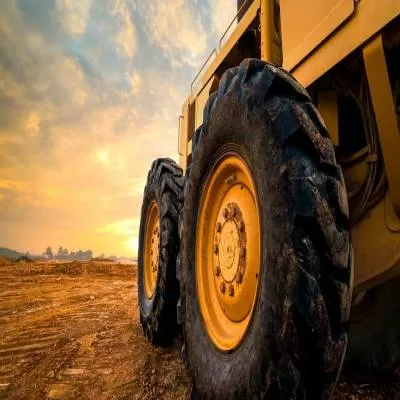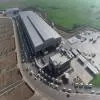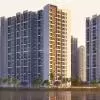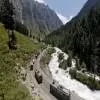- Home
- Infrastructure Urban
- ECONOMY & POLICY
- India, as a society, is highly sustainable with a small ecological footprint
India, as a society, is highly sustainable with a small ecological footprint
Following a series of critically acclaimed private houses in Singapore and large-scale projects in Southeast Asia, China and Australia, it is now Mumbai's turn to experience the magic of WOHA, one of the world's foremost 'green' architects for high-rise buildings. Bringing his expertise to New Cuffe Parade, a project launched by Lodha Group in Mumbai, Richard Hassell, Founding Director, WOHA, shares his insights on building green with CW...
Tall buildings are generally viewed as mega-scale energy consumers with little regard for sustainable architecture....
While tall buildings have higher embodied energy in some respects, if considered part of a dense urban condition with access to public transport and precinct services, there are energy savings over a sprawling low-rise development. In the tropics particularly, the benefits of high rises with fresher air, less dust, less noise, better breeze, more privacy and lower humidity all ensure easier living in the heart of a city without sealing up the home and turning on the air-conditioning.
What are the emerging trends in constructing sustainable tall buildings?
In the developed world, buildings are technologically refined with high-performance façades and central control and monitoring. Our preference in the developing world is to use less technology and more architectural means to achieve sustainable and easy-to-maintain tall buildings; for instance, a sunshade or balcony, rather than high-performance glazing, and windows that open rather than a computer-controlled ventilation system.
Tell us about the latest developments in technology for energy-efficient buildings.
Technologies include cogeneration or tri-generation of onsite power and heating/cooling systems, and feedback systems such as light and air quality sensors that ensure light and air are only supplied to places that need them. Most of these apply more to commercial buildings. An all-fresh-air air-conditioning system in a school in Singapore uses the concept of air quality gradation from fully air-conditioned flowing through in-between spaces to external air. Research is also being conducted on providing dry air rather than cool air. The real challenge is in designing technologies that work with the way people naturally behave.
What are the challenges involved in constructing tall buildings integrated with their urban habitat?
Often, the appearance of tall buildings signifies a major change in the urban habitat, as they bring in higher densities, with the attendant traffic and demands on infrastructure. I think the challenges in Mumbai are to keep its vibrant streetscape while allowing a more efficient use of land and infrastructure. A high-rise structure, however, is not an alien element that cannot relate to its surroundings; what is most important is the way it interacts with the street level.
What would be the best design solution for a tall office building?
Office buildings are full of energy-guzzling machines that require constant air quality; they are used during the day, are largely empty at night and are densely populated. The solutions depend on the local climate. For a city like Mumbai, shading is preferred over curtain walls to reduce heat absorption. This can be combined with shelves to bounce light deep into the floor plan. The façade should have a high insulation value to keep out the heat. The energy systems should be designed to work efficiently with the day-and-night cycle, and the design should provide spaces for inhabitants to get together - community and park spaces in the sky, as well as on the ground.
Cite a few examples of the new generation of sustainable high-rise buildings.
For residential buildings, our project The Met in Bangkok has received recognition for its use of low technology and architectural means to provide energy efficiency. For commercial office buildings, Norman Foster, Richard Rogers and Renzo Piano have taken the technological approach over a series of excellent buildings. Sauerbruch Hutton in Germany has been designing excellent office buildings in a variety of scales. Also, Pearl River Tower in China by SOM tests many interesting strategies.
How is the construction of a green high-rise different?
It depends on the strategies used. Our project in Mumbai is quite a different high-rise structure owing to the internal voids that promote light and air penetration into the tower, which create a construction and structural challenge.
Tell us more about the project.
At New Cuffe Parade, we have developed low-technology but exciting strategies. For instance, we opened up the tower to allow all apartments to have cross-ventilation and natural light throughout by separating them with light slots. We then slung terraces and decks within these slots, so people all the way up can have gardens and swimming pools - the green device becomes a lifestyle feature. Similarly, for the balconies, which are enjoyable decks, sunshades and screens for the services. One exciting feature is the wind scoops to make the basement energy efficient. These are based on ancient devices used in Hyderabad, where you catch the prevailing wind and funnel it down into a house, but here we are using it to naturally funnel fresh air into the basement.
What are the challenges involved in executing a project in India?
We were surprised to discover that very few contractors were ready to take on the role of a main contractor. Instead, it is common for a project to have one civil contractor with separate subcontractors for finishing, plumbing, etc. A main contractor who takes on these subcontractors ensures that works are properly coordinated. This will become necessary in India to deliver world-class buildings.
How would you compare international green standards with Indian standards?
Each country is developing its own standards. Green design should be local, and work with the climate, culture and stage of development. I hope to see Indian standards develop based on real, practical ways of building and living, and not adopting external standards.
In India, how affordable is it to construct a green high-rise building?
It is very affordable, particularly if sensible, low-technology solutions are used rather than complex imported systems. With India's low labour cost and high material cost, there are more possibilities to create architectural solutions by hand without importing equipment that may not be maintained properly. I like the idea that computer-modelled, highly efficient solutions can then be built by local labour, as we are doing with our wind scoops, which are being designed with the help of computer simulation in Canada.
What is your outlook on the growth of green high-rise buildings in India?
India, as a society, is already highly sustainable with a small ecological footprint. The challenge is to create prosperity for the population without increasing this. We must learn from these existing efficiencies and transform them to suit the growing population rather than abandoning them, adopting a wasteful western lifestyle, then having to learn them all over again.
To give your feedback, write in at feedback@ASAPPmedia.com
Richard Hassell, Founding Director, WOHAFollowing a series of critically acclaimed private houses in Singapore and large-scale projects in Southeast Asia, China and Australia, it is now Mumbai's turn to experience the magic of WOHA, one of the world's foremost 'green' architects for high-rise buildings. Bringing his expertise to New Cuffe Parade, a project launched by Lodha Group in Mumbai, Richard Hassell, Founding Director, WOHA, shares his insights on building green with CW...Tall buildings are generally viewed as mega-scale energy consumers with little regard for sustainable architecture....While tall buildings have higher embodied energy in some respects, if considered part of a dense urban condition with access to public transport and precinct services, there are energy savings over a sprawling low-rise development. In the tropics particularly, the benefits of high rises with fresher air, less dust, less noise, better breeze, more privacy and lower humidity all ensure easier living in the heart of a city without sealing up the home and turning on the air-conditioning.What are the emerging trends in constructing sustainable tall buildings? In the developed world, buildings are technologically refined with high-performance façades and central control and monitoring. Our preference in the developing world is to use less technology and more architectural means to achieve sustainable and easy-to-maintain tall buildings; for instance, a sunshade or balcony, rather than high-performance glazing, and windows that open rather than a computer-controlled ventilation system.Tell us about the latest developments in technology for energy-efficient buildings.Technologies include cogeneration or tri-generation of onsite power and heating/cooling systems, and feedback systems such as light and air quality sensors that ensure light and air are only supplied to places that need them. Most of these apply more to commercial buildings. An all-fresh-air air-conditioning system in a school in Singapore uses the concept of air quality gradation from fully air-conditioned flowing through in-between spaces to external air. Research is also being conducted on providing dry air rather than cool air. The real challenge is in designing technologies that work with the way people naturally behave.What are the challenges involved in constructing tall buildings integrated with their urban habitat? Often, the appearance of tall buildings signifies a major change in the urban habitat, as they bring in higher densities, with the attendant traffic and demands on infrastructure. I think the challenges in Mumbai are to keep its vibrant streetscape while allowing a more efficient use of land and infrastructure. A high-rise structure, however, is not an alien element that cannot relate to its surroundings; what is most important is the way it interacts with the street level.What would be the best design solution for a tall office building?Office buildings are full of energy-guzzling machines that require constant air quality; they are used during the day, are largely empty at night and are densely populated. The solutions depend on the local climate. For a city like Mumbai, shading is preferred over curtain walls to reduce heat absorption. This can be combined with shelves to bounce light deep into the floor plan. The façade should have a high insulation value to keep out the heat. The energy systems should be designed to work efficiently with the day-and-night cycle, and the design should provide spaces for inhabitants to get together - community and park spaces in the sky, as well as on the ground.Cite a few examples of the new generation of sustainable high-rise buildings. For residential buildings, our project The Met in Bangkok has received recognition for its use of low technology and architectural means to provide energy efficiency. For commercial office buildings, Norman Foster, Richard Rogers and Renzo Piano have taken the technological approach over a series of excellent buildings. Sauerbruch Hutton in Germany has been designing excellent office buildings in a variety of scales. Also, Pearl River Tower in China by SOM tests many interesting strategies.How is the construction of a green high-rise different? It depends on the strategies used. Our project in Mumbai is quite a different high-rise structure owing to the internal voids that promote light and air penetration into the tower, which create a construction and structural challenge.Tell us more about the project. At New Cuffe Parade, we have developed low-technology but exciting strategies. For instance, we opened up the tower to allow all apartments to have cross-ventilation and natural light throughout by separating them with light slots. We then slung terraces and decks within these slots, so people all the way up can have gardens and swimming pools - the green device becomes a lifestyle feature. Similarly, for the balconies, which are enjoyable decks, sunshades and screens for the services. One exciting feature is the wind scoops to make the basement energy efficient. These are based on ancient devices used in Hyderabad, where you catch the prevailing wind and funnel it down into a house, but here we are using it to naturally funnel fresh air into the basement.What are the challenges involved in executing a project in India? We were surprised to discover that very few contractors were ready to take on the role of a main contractor. Instead, it is common for a project to have one civil contractor with separate subcontractors for finishing, plumbing, etc. A main contractor who takes on these subcontractors ensures that works are properly coordinated. This will become necessary in India to deliver world-class buildings.How would you compare international green standards with Indian standards? Each country is developing its own standards. Green design should be local, and work with the climate, culture and stage of development. I hope to see Indian standards develop based on real, practical ways of building and living, and not adopting external standards.In India, how affordable is it to construct a green high-rise building?It is very affordable, particularly if sensible, low-technology solutions are used rather than complex imported systems. With India's low labour cost and high material cost, there are more possibilities to create architectural solutions by hand without importing equipment that may not be maintained properly. I like the idea that computer-modelled, highly efficient solutions can then be built by local labour, as we are doing with our wind scoops, which are being designed with the help of computer simulation in Canada.What is your outlook on the growth of green high-rise buildings in India? India, as a society, is already highly sustainable with a small ecological footprint. The challenge is to create prosperity for the population without increasing this. We must learn from these existing efficiencies and transform them to suit the growing population rather than abandoning them, adopting a wasteful western lifestyle, then having to learn them all over again.To give your feedback, write in at feedback@ASAPPmedia.com




